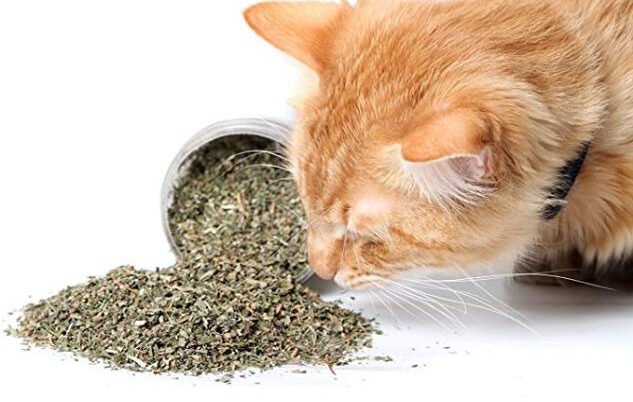
All About Catnip: Everything You Need to Know
… almost all cats Down Under are immune to catnip!
Catnip: marijuana for cats. Ok, maybe not marijuana exactly, but it sure does seem to get our kitties high. But why? What is it about catnip that makes it such a powerful feline drug?
On the surface, nepeta cataria is nice to look at; in the summer it features pretty clusters of white or lavender flowers. And, as an herb in the mint family, it has a pleasant scent.
But it’s what lurks under the surface that makes it so unique.
Recent Research
According to a 2021 article from The New York Times, some of the chemicals, particularly Nepetalactone, found in catnip (as well as a plant called silver vine) are an excellent mosquito deterrent.
And because cats can contract heartworm infections from mosquito bites, anything that keeps the insects away is beneficial to the cats.
At the same time, nepetalactone, which is found in the leaves and stems of catnip, triggers euphoria receptors in the brain of cats when crushed and inhaled or ingested by cats — and only cats! — giving your cat the famous “happy high” response.
But whether there is some cause-and-effect relationship between the plant’s mosquito repellent nature and its drug-like influence is still unclear.
In fact, there’s much about nepetalactone that scientists still don’t understand.
But what is clear is that the compound binds to the olfactory sensors in a cat’s nose that send messages to the cat’s hypothalamus, which in turn activates a happiness response. But it’s not necessarily based on smell; even cats with no sense of smell can react to the compound!
Additionally, when ingested, cats have an entirely different reaction — becoming sleepy rather than animated — something science has yet to explain.
While there are still some unknowns, there is much we do know.
Read on for answers to some of the most commonly asked questions about catnip.
What does a typical catnip reaction look like?
Cats reacting to catnip are unmistakable, and usually quite fun to watch. They’ll roll around in it, paw at it or kick it, or lick it. Others run around like crazed maniacs. They might start meowing or purring; some even drool. Some do all of these things.
And just as suddenly as it all started, it stops, with most reactions lasting between five and 15 minutes. Don’t bother giving them more; it takes several hours for most cats to be reactive again. Not to mention, many cats will feel the need for a proper nap afterward.
One word of caution: Some cats become aggressive on catnip. It is unclear why this happens, but if you’ve never given your kitty the stuff before, be careful the first time. Do not try to pet your cat until you’re sure he’s not aggressive. If he starts hissing, back away and wait out the response.
If you have multiple cats, you want to be sure none turn into Mr. Hyde before giving them all catnip at the same time.
Do all cats respond to catnip?
A cat’s response to catnip is genetically programmed, and only about 50 to 75 percent of cats will respond. This percentage varies by geography; the genetic stock of house cats in Australia is such that almost all cats Down Under are immune to catnip!
Additionally, young kittens (anywhere from under two months to as old as six months) are less likely to react. Older cats may also lose their “taste” for the stuff, but not always.
Interestingly, large cats like tigers and lions can be reactive as well, but you probably don’t want to get in the way when they get the zoomies from the stuff!
Is my cat actually high?
Cats reacting to catnip resemble humans on drugs like marijuana, LSD, or cocaine, but that doesn’t mean your kitty is actually getting high. Truthfully, scientists don’t know yet if nepetalactone works the same way in cats’ brains that these drugs do in human brains.
Why does my cat get sleepy after eating catnip?
How catnip affects your cat is dependent on how the nepetalactone is absorbed. When it’s through the nasal passages, it acts more as a stimulant.
But when ingested, it’s actually more of a sedative, and you’ll end up with relaxed kitty on your hands. Cats typically only eat fresh catnip, though they might munch on dried leaves as well.
How do I give catnip to my cat?
Catnip comes in a variety of forms and can be given to cats in several ways.
Dried
Dried catnip is the most common form. It comes in pouches or jars and looks much like the dried oregano leaves you’d find in a pizzeria. You can put it on pretty much everything. For the best results, however, you want it to be as fresh as possible; make sure the container is airtight and store in the freezer for best results.
You can either grow it yourself and then dry it out and crush it, or, if you’re purchasing from a store, make sure the store is turning over its supply regularly.
Many people give their cats toys stuffed with catnip. Word to the wise: Many toys that come pre-loaded with catnip use a lesser quality of the stuff, which might not get the reaction you’re hoping for. Better to purchase toys you can put catnip in, so you can be sure of the quality you’re using.
When purchasing dried catnip from a store, check the label to see if it lists “fillers” as an ingredient; you want something that’s all catnip for the best result. You should be able to smell the plant’s minty odor through the packaging.
It’s also great if you want to introduce a new cat tree, scratching post, or toy. Sprinkle some dried catnip on it or use a spray; it won’t be long before your cat is checking it out.
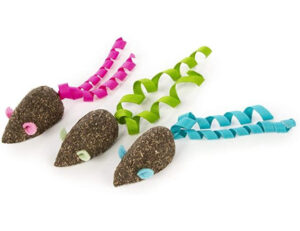
Compressed
Compressed catnip is simply dried catnip that has been compressed into a tight ball your cat can bat around. The catnip effect lasts about a week, but after that, your cat may still choose to use it as a toy. We’ve also seen compressed mice and “cigars.”
Fresh
Some people choose to grow catnip as a houseplant. It’s pretty, and your cat can chomp down on it whenever she’s in the mood. There are several varieties but the most common — and most reliable — is nepeta cataria.
If you’re thinking about growing it indoors, remember it grows to about three feet tall and needs lots of full sunlight. Here’s a great wikiHow guide to growing your own catnip.
Spray
We at Keeping It Pawsome are fans of catnip sprays. There’s no mess (the dried stuff gets all over the place!) and the bottle lasts a long time.
We spray a few of their toys, the cat tree and their cat beds. We’re more cautious about spraying our rugs because a possible reaction can be scratching and we’d rather not give them a reason to claw at our rugs!
Bubbles
A great option for families, catnip bubbles are fun for both kids and cats to chase around. After breaking the bubbles, the cat gets exposed to the oil and the real fun begins. (As with all bubbles, they can leave a soapy, sticky residue on hard surfaces, so confine them to an area that’s easy to clean.)
Is catnip dangerous for my cat?
No. Catnip is not harmful to your cat, nor is it addictive. However, cats can become immune to it, so you should not overuse it. Stick to giving catnip, in any form, no more than three times a week.
Have an indoor cat that would love to be outside? Check out our review of the Outback Jack cat tent.
1 Comment
Comments are closed.

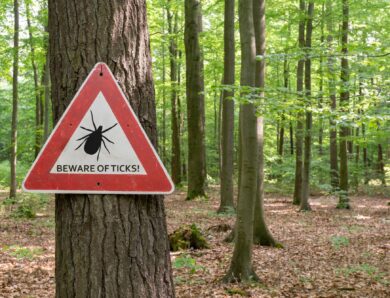
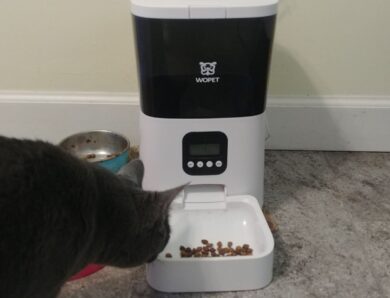
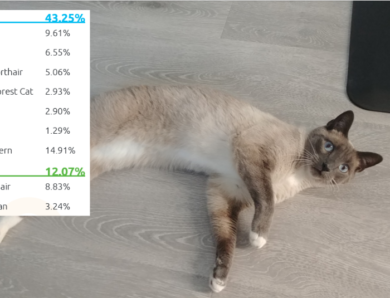


Interesting. So WHY are cats down under immune?